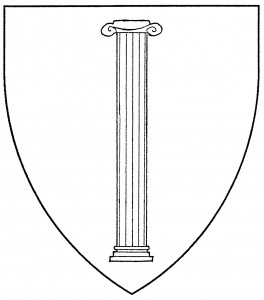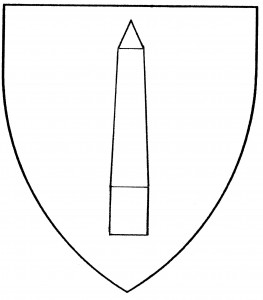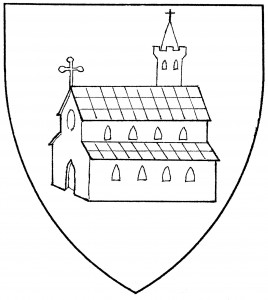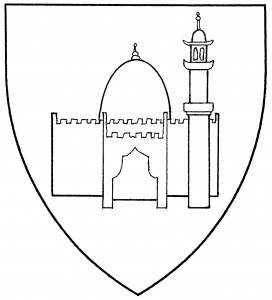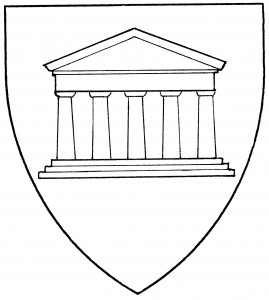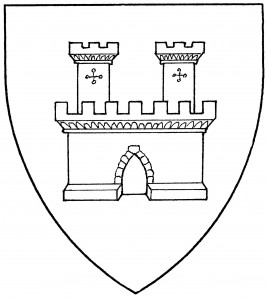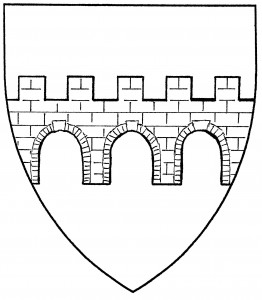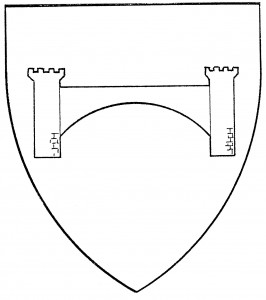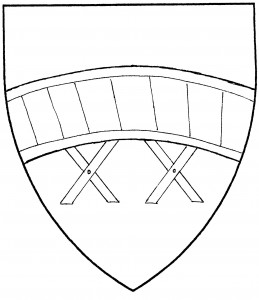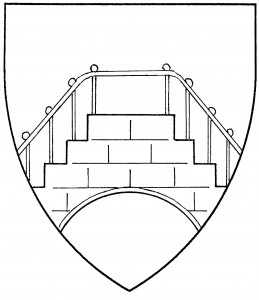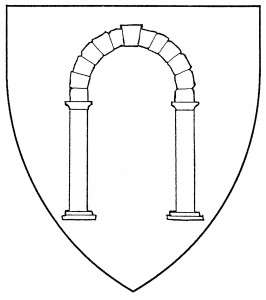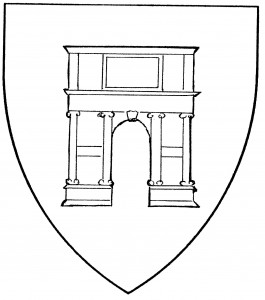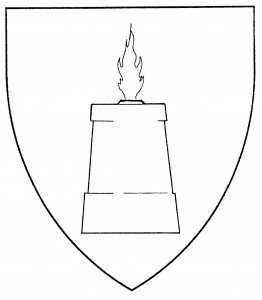A column is a stone pillar, used as a structural support in a building. The default column is that found in Greco-Roman architecture; the exact type may be left to the artist, or it may be specified, e.g., an “Ionic column” or a “Doric column”. These are guides to the artist; the heraldic difference is negligible. The column is a period charge, used in Italy in the canting arms of Colonna, 1413 [Conz.Const. xli]; it is palewise by default.
Society armory has a similar charge, the “obelisk”, a four-sided stone stele terminating in a pyramid; the ancient Egyptians used it as a commemorative monument. It too is palewise by default.
For related charges, see zule. See also edifice.
The Canton of the Rising Stone bears: Argent, on a pile inverted azure an obelisk argent, overall a laurel wreath and a bordure counterchanged.
Octavia Columella bears: Per pale gules and argent, two columns counterchanged.
Adam ben Avram bears: Per pale vert and azure, a column Or.
